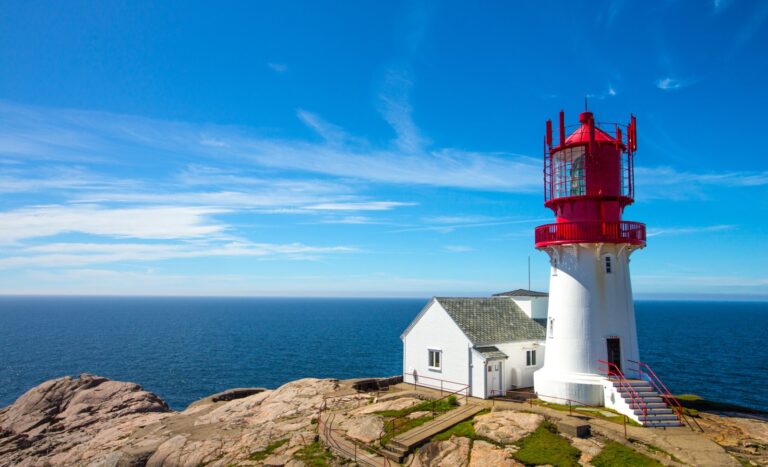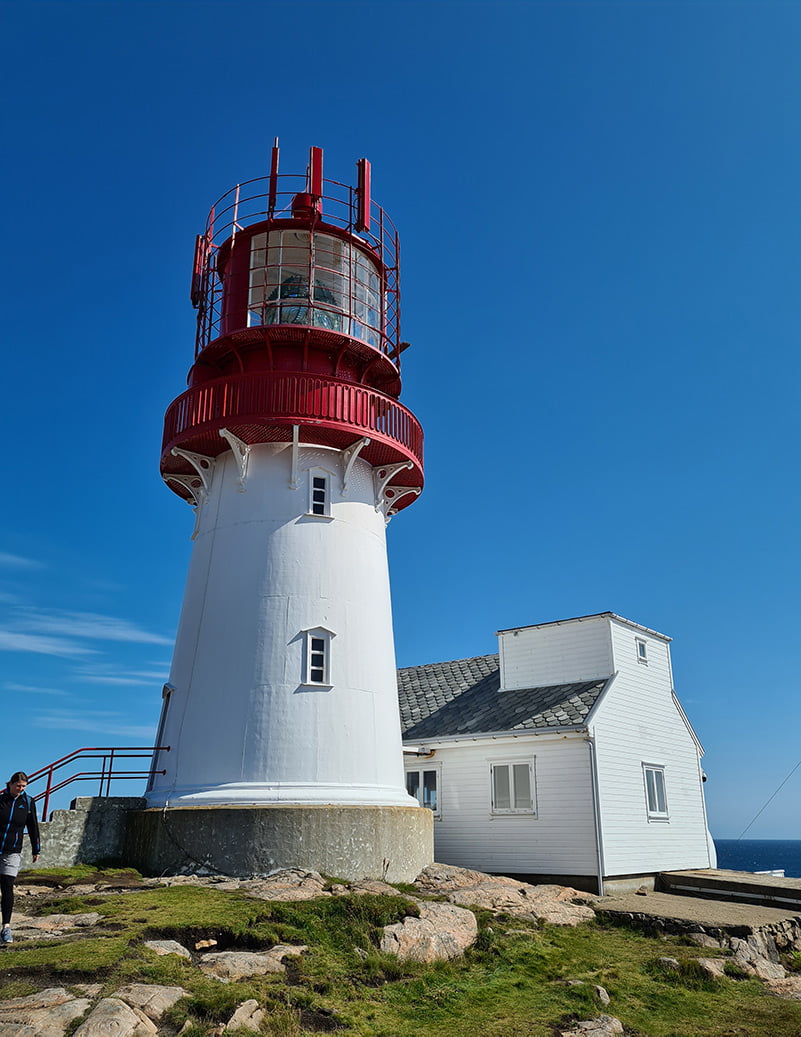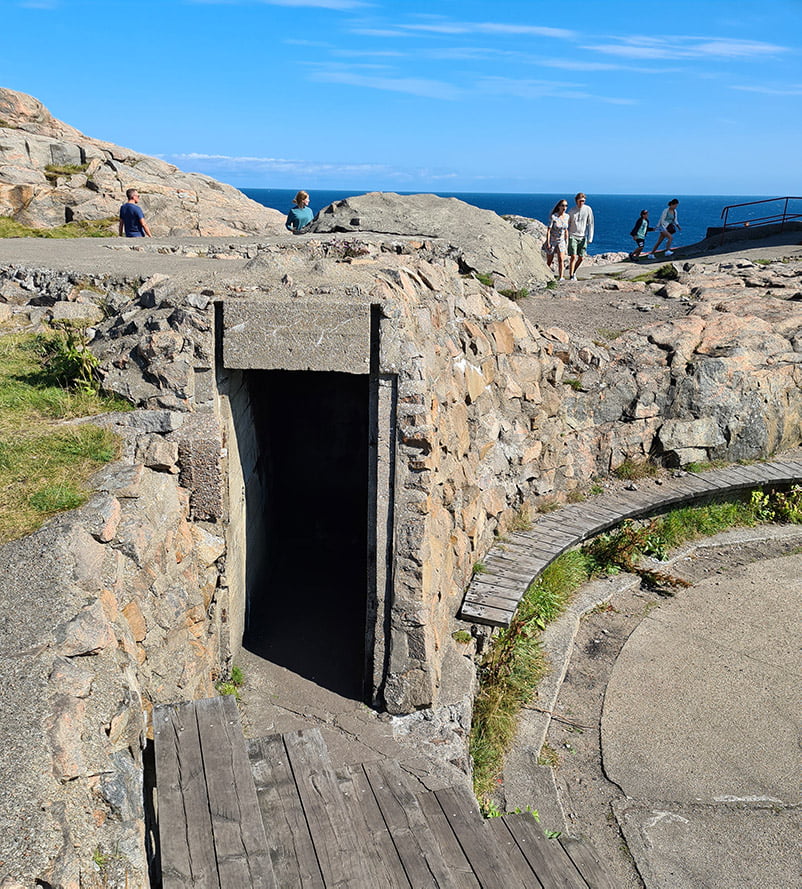The historic Lindesnes lighthouse marks the southernmost point in Norway. Come take a tour with us.
Since the 17th century, a lighthouse has stood at Lindesnes to mark the entrance to the Skaggerak straight and Baltic Sea from the North Sea. As Norway's southernmost point, it's long been a crucial marker for ships.

The present lighthouse is just over 100 years old, but it remains an important historic site. Read on to learn why, and check out some beautiful pictures from the site.
Table of Contents
Where is Lindesnes?
Lindesnes is the southernmost municipality in Norway. Part of Agder county in Southern Norway, it has a population of around 23,000, many of whom live in the town of Mandal.
Lindesnes lighthouse sits alone about a 40 km drive west of Mandal, and about 10 km southwest of the small village of Høllen.

It marks, more or less, Norway's southern cape. A signpost marks the distance to the North Cape (Nordkapp) and Slettnes lighthouse, Norway's northernmost lighthouse near Gamvik.
The present lighthouse building
Painted white with a red top, the lighthouse itself is an attractive sight, especially against an almost cloudless sky. It's made of cast iron on a foundation of granite.

From its elevation of 50.1 metres, the Fresnel lens emits a light that can be seen from up to 17.7 nautical miles (32.8 km) away. It emits a flashing white light that is always on, rotating in intensity every 20 seconds.

Keeper's cottages, sheds, and boathouses are all located close to the lighthouse.
Inside the lighthouse
Step inside and you'll find photos and information about the previous lighthouses that once stood here. There's also plenty of photos from other notable lighthouses around Norway.

The lighthouse is open to explore so you can take the steep steps up to the viewing platform, located just below the beacon.
The spectacular views from the top
While the building itself isn't especially tall, its located on top of some rocks so the coastal views are wonderful.

Southern Norway enjoys the best weather in the country, especially during the summer months. The daily mean temperature doesn't drop below freezing (0°C) at any time during the year.

An important weather station is installed on the site, which records readings on temperature and rainfall. It has done so since January 1863.
Lindesnes lighthouse museum
Built into nearby rocks, a small museum tells the story of the development and history of the lighthouse over the years. Inside you'll find items including a former beacon.

The building also hosts Fjellhallen, a multipurpose theatre that's used for concerts and events built by Agder county as a millennium project. It also plays a film about the lighthouse for museum visitors.
Lindesnes lighthouse in wartime
During World War II, the lighthouse was taken over by the occupying German forces.

They made substantial changes to what would be an important lookout. They built fortifications including trenches and passages in the rock around the lighthouse. Much of the remains from this period are still visible on the site today.
British aircraft sunk the German submarine U 319 in July 1944. The submarine was spotted by a British B-24 Liberator aircraft southwest of Lindesnes lighthouse. All 50 onboard were killed.


A bit of advice from an Englishman who used to live in Southern Norway for a while and married a Sorland’s jenta. Although, as Mr Nikkel said in the article, the lighthouse is best photographed against a blue sky, the best time to visit the lighthouse and surrounding area is when there is stormy weather. The stormy sea smashing against the rocks is a very dramatic scene. Lindesness Lighthouse is the most southern lighthouse on the Norwegian mainland, and although this oft repeated fact hints a lighthouse on an island further south, I do not know where it is, if it is there at all.
I Love light houses…
I’ve seen/visited many of them on the US east coast. None can impress more than this one does.